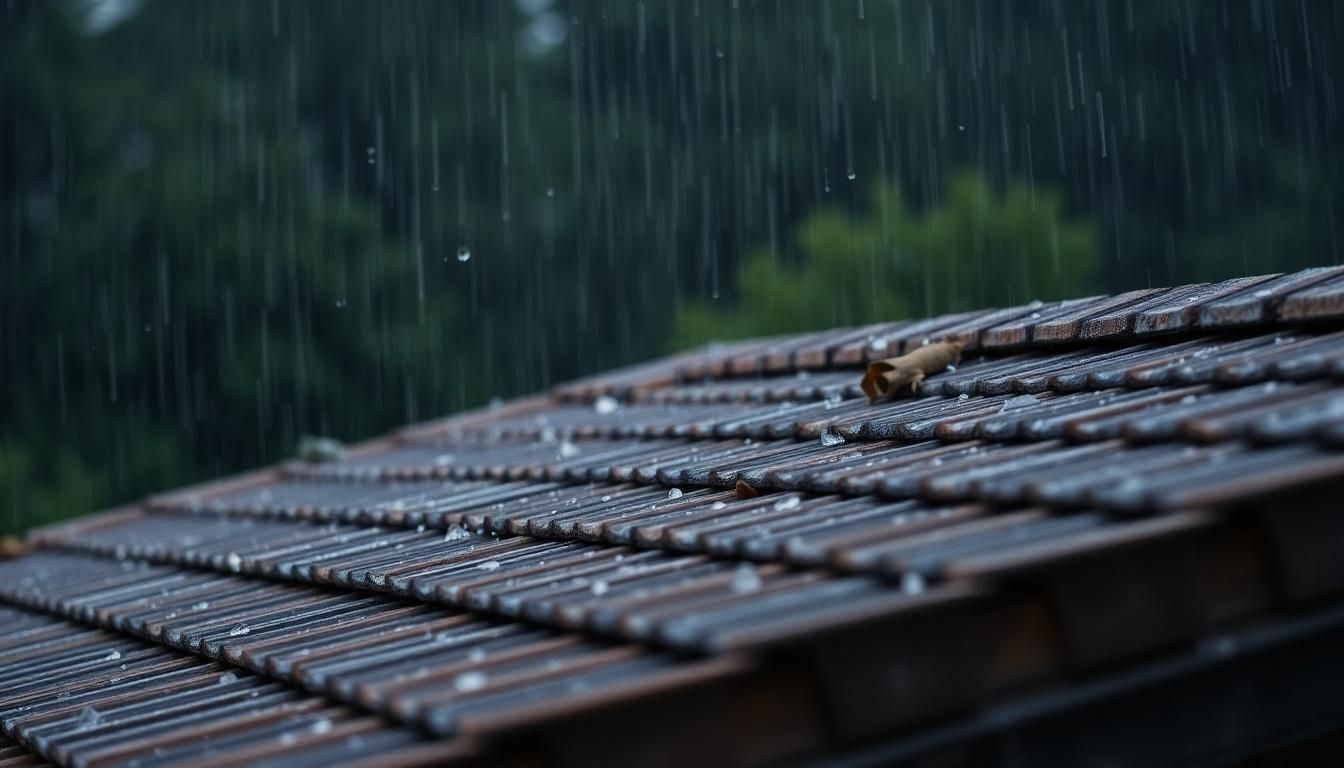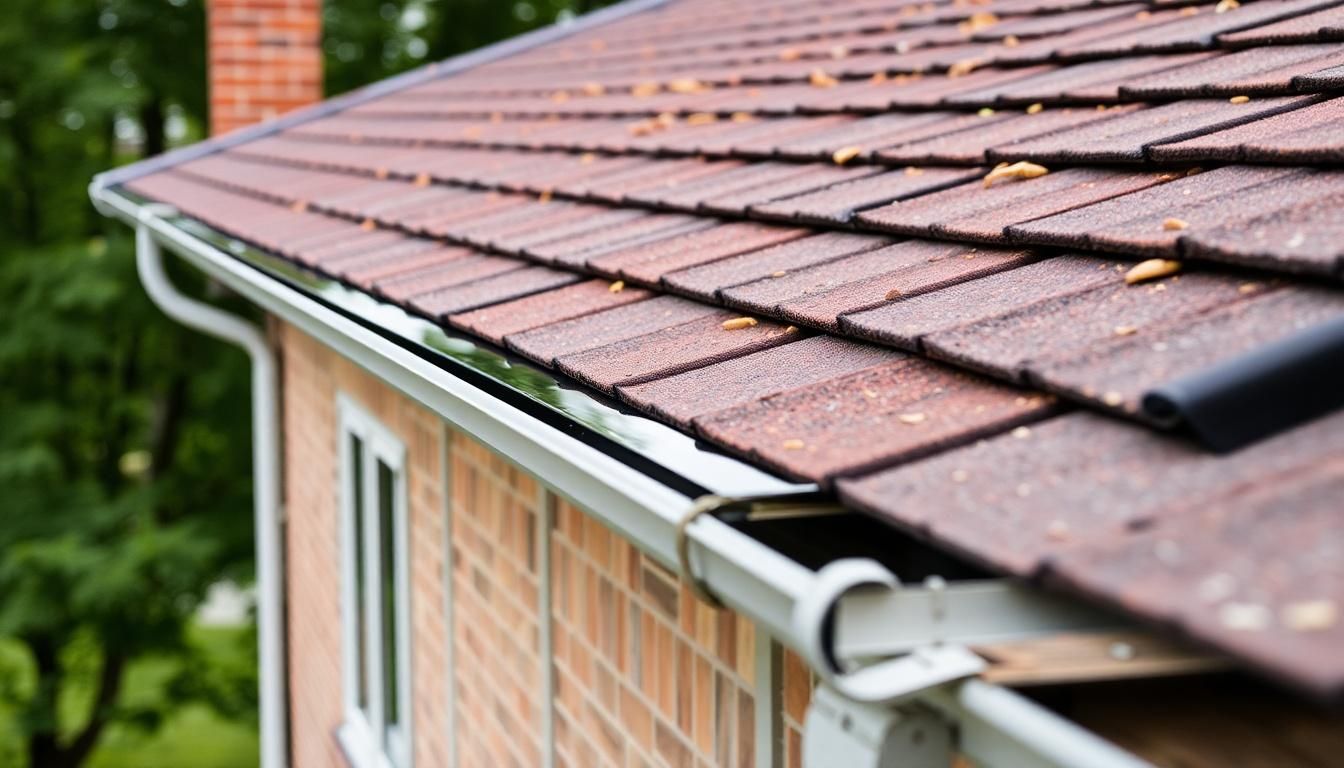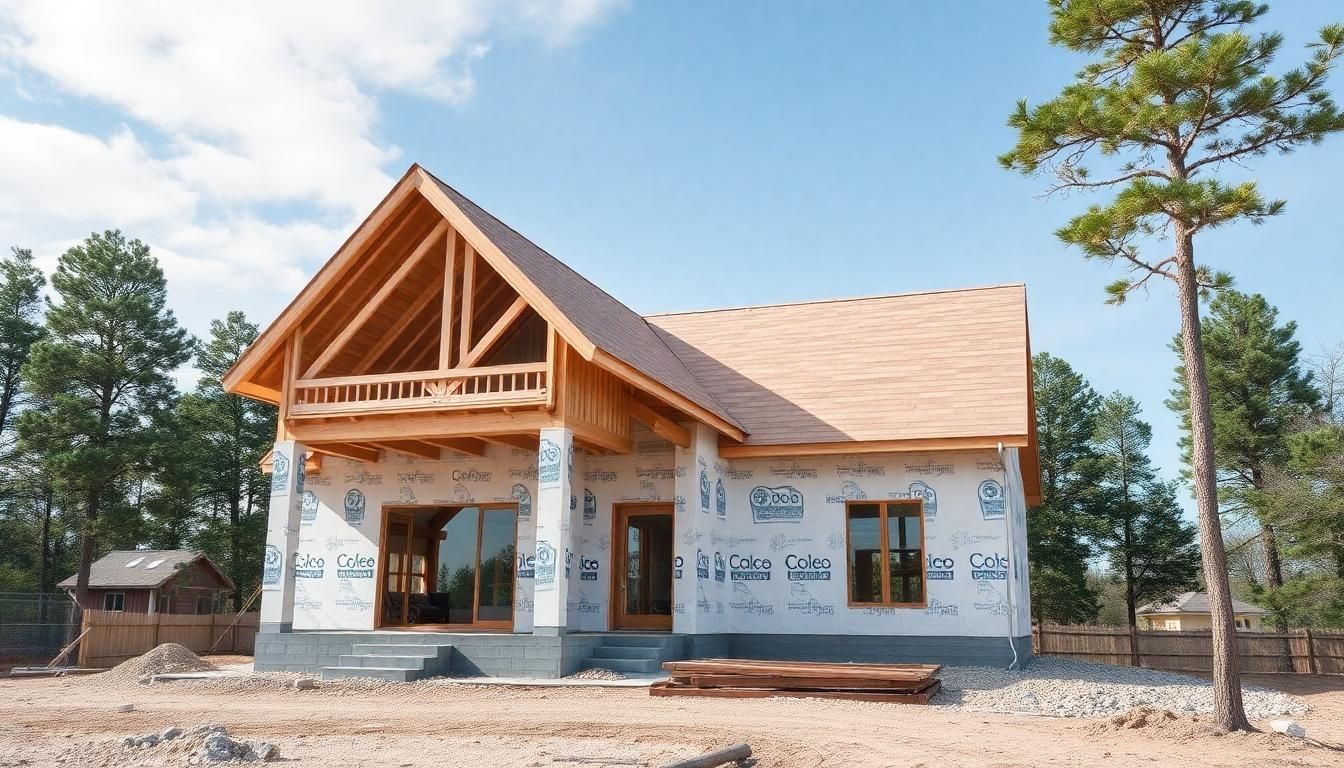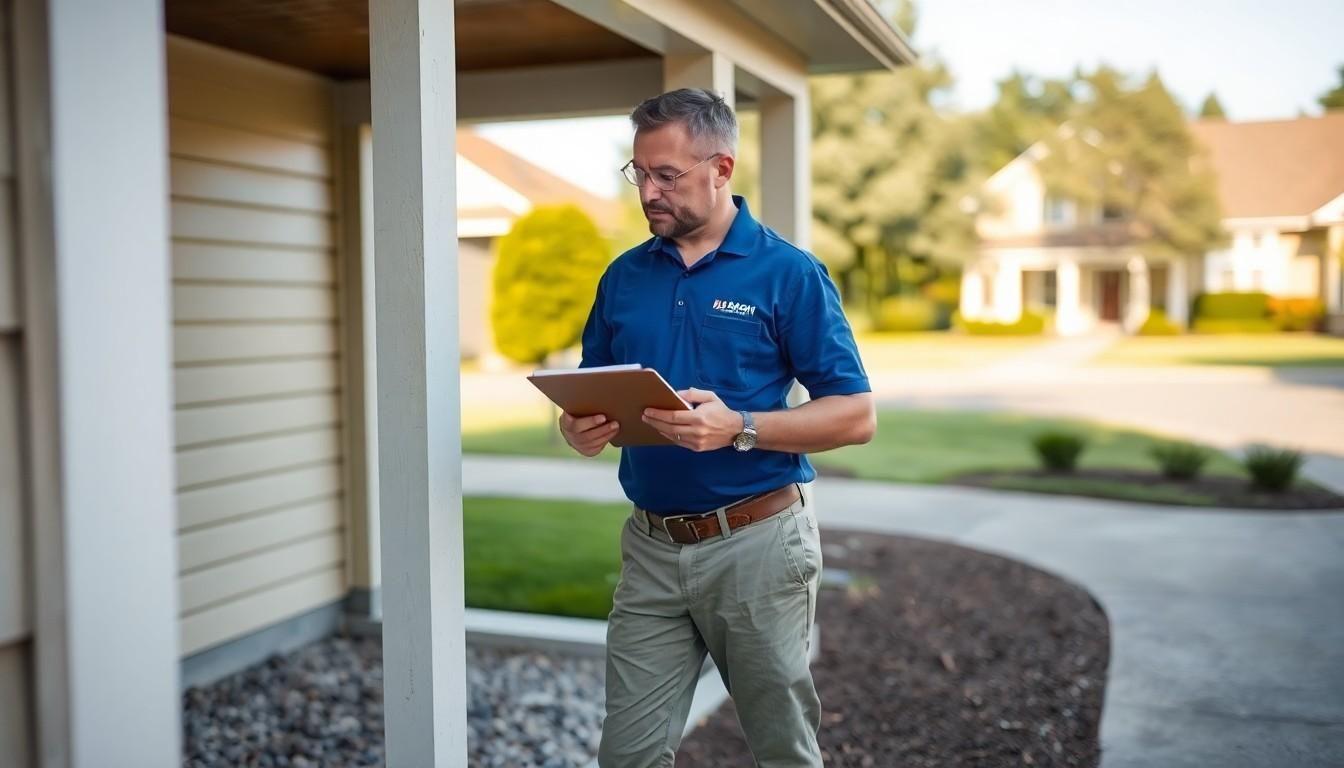Warning Signs Your Rain Gutters Need Repair Before Water Damage Strikes
Rain gutters play a crucial role in protecting your home from water damage, yet they're often overlooked until problems become severe. Damaged gutters can lead to foundation issues, landscape erosion, and even interior water damage—all costly repairs that could have been prevented with timely maintenance.
Recognizing the warning signs of gutter damage early can save homeowners thousands in potential repairs. From visible sagging to mysterious basement leaks, your home often provides clear indicators when gutters aren't functioning properly. These signs don't always announce themselves dramatically, making it essential for homeowners to know what to look for during routine property maintenance.
Why Rain Gutter Maintenance Matters for Your Home
Rain gutters serve as your home's first line of defense against water damage. They channel rainwater away from your foundation, roof, and siding, preventing costly structural problems. Properly maintained gutters protect multiple areas of your property simultaneously.
Functional gutters direct water flow away from your home's foundation, preventing soil erosion and basement flooding. They also protect your landscaping from excessive runoff that can wash away plants and create unsightly trenches in your yard. Additionally, well-maintained gutters safeguard your siding and exterior paint from water staining and premature deterioration.
The financial impact of neglected gutters can be significant. Minor gutter repairs typically cost much less than foundation repairs from water damage. Basement waterproofing projects also represent expenses that could be avoided with regular gutter maintenance.
Beyond structural protection, functioning gutters help prevent pest infestations. Standing water in clogged gutters creates ideal breeding grounds for mosquitoes and attracts other pests like termites and carpenter ants that can cause additional damage to your home.
Regular maintenance also extends the lifespan of your gutter system. Most aluminum gutters last 20+ years when properly maintained, compared to just 5-10 years when neglected. This simple upkeep represents significant long-term savings for homeowners.
Water Overflowing During Rainfall


Cracks, Holes, and Rust Spots
Visible damage to your gutters in the form of cracks, holes, and rust spots signals a compromised gutter system that's failing to protect your home. These defects create exit points for water, allowing it to leak directly onto your home's exterior and foundation instead of being channeled away through the downspouts.
Small vs. Large Damage Points
Small damage points in gutters initially appear as hairline cracks, pinhole-sized openings, or minor rust spots along seams and joints. These seemingly insignificant imperfections often go unnoticed but still permit water to escape, causing gradual deterioration to fascia boards, siding, and landscaping. Large damage points include extensive cracks spanning several inches, holes big enough to see daylight through, and rust areas that have eaten through the metal. These major defects cause immediate and substantial water redirection issues during rainfall, resulting in concentrated water flow that erodes soil, damages foundations, and creates unsightly water stains on exterior walls. Regular inspection of gutters from ground level with binoculars helps identify these issues before they escalate into costly repairs.
The Progressive Nature of Gutter Damage
Gutter damage follows a predictable progression pattern that accelerates over time if left unaddressed. What begins as a small rust spot or hairline crack expands with each freeze-thaw cycle and exposure to UV radiation. Water entering these openings further corrodes metal gutters, especially at joints and seams where water pools. This water intrusion weakens surrounding areas, causing small defects to grow exponentially larger with each rainfall. The added weight of debris accumulation puts pressure on these compromised sections, further expanding cracks and holes. Winter conditions particularly accelerate damage as water freezes inside cracks, forcing them wider through expansion. Detecting and repairing these issues early prevents this snowball effect and extends the lifespan of your gutter system significantly.
Learn more about protecting your home from water damage with professional gutter inspections at Accurate Home and Commercial Services.
Water Damage on Exterior Walls
Water damage on exterior walls often indicates failing rain gutters. When gutters don't properly channel rainwater away from your home, the excess moisture contacts your exterior walls, causing visible deterioration and potential structural issues that worsen over time.
Staining and Discoloration Signs
Exterior wall staining appears as vertical streaks or dark patches beneath gutters, signaling water overflow or leakage. These discolorations typically start as light water marks but develop into stubborn brown or green stains as mold and mildew establish colonies in the persistently damp areas. Paint bubbling, peeling, or flaking on exterior surfaces directly correlates with moisture intrusion from malfunctioning gutters. In severe cases, efflorescence—white, chalky mineral deposits—forms on brick or concrete surfaces as water evaporates and leaves behind mineral residue. These visual indicators commonly appear first near gutter seams, downspout connections, or sections where gutters have separated from the fascia board.
Foundation Concerns from Improper Drainage
Failed gutters allow water to pool around your home's foundation, creating serious structural vulnerabilities. This concentrated moisture penetrates foundation walls, forming cracks that widen with freeze-thaw cycles. As water erodes the soil supporting your foundation, uneven settling occurs, manifesting as diagonal cracks in exterior walls or stair-step cracks in masonry. Basement walls show water infiltration through damp patches, efflorescence, or actual water seepage during rainstorms. The damage progresses gradually, with early warning signs including moistened soil bands around the foundation perimeter and small puddles forming near downspouts. Without proper drainage correction, these issues inevitably lead to costly foundation repairs and potential structural instability.
Plant Growth and Pest Infestations in Gutters
Vegetation and pests in your gutters aren't just unsightly—they're clear indicators that your gutter system needs immediate attention. When gutters fill with debris, they create perfect ecosystems for plants to grow and pests to thrive, leading to blockages and structural damage to both the gutters and your home.
How Vegetation Indicates Neglected Gutters
Plant growth in gutters signals long-term neglect and accumulated organic matter. Seeds carried by wind or birds settle in debris-filled gutters and sprout when conditions are right. Small weeds, moss, and even small saplings take root in the decomposing leaves and twigs, creating mini gardens along your roofline. The root systems from these plants penetrate gutter seams, creating cracks and separations that allow water to escape. As plants grow larger, they add weight to the gutter system, causing it to pull away from the fascia board. Additionally, visible vegetation attracts birds that bring more seeds, creating a cycle of increasing plant growth. The presence of green sprouts peeking over your gutter edges indicates they haven't been cleaned for several months and require immediate maintenance to prevent structural damage.
Dealing With Insects and Rodents
Clogged gutters create perfect breeding grounds for pests that can eventually invade your home. Mosquitoes lay eggs in standing water, with some species producing a new generation every 7-10 days. Carpenter ants and termites are attracted to the damp wood around compromised gutters, potentially causing extensive structural damage. Rodents use vegetation in gutters as pathways to access your roof and attic, building nests in the debris-filled channels. These pests gnaw on electrical wiring, insulation, and wooden components, creating fire hazards and compromising your home's integrity. The decomposing organic matter also attracts beetles, roaches, and earwigs that may eventually find their way into your living spaces. Eliminating these infestations requires not only addressing the immediate pest problem but also resolving the underlying gutter issues that created the hospitable environment for them in the first place.
When DIY Fixes Aren't Enough
While minor gutter issues like small clogs and loose fasteners can be fixed by homeowners, certain problems require professional intervention. DIY repairs become inadequate when structural damage compromises the entire gutter system. Signs that professional help is needed include extensive rust, multiple cracks, significant sagging, and separation from the roofline. These issues indicate underlying structural weaknesses that temporary fixes can't address.
Attempting complex repairs without proper experience often leads to incomplete solutions that worsen over time. For example, improperly sealing large cracks or holes typically results in continued leaking during heavy rainfall. Professionals bring specialized tools, appropriate materials, and expertise to properly diagnose and fix these persistent problems.
Safety concerns also necessitate professional involvement. Gutter repairs often require working at heights on unstable ladders while handling tools. Falls account for numerous home maintenance injuries annually. Professional gutter specialists come equipped with proper safety gear, insurance coverage, and training to navigate these hazards safely.
Additionally, when water damage has extended beyond the gutters to affect fascia boards, roof edges, or foundation areas, these interconnected issues require comprehensive solutions that address the entire water management system. DIY approaches typically focus on isolated symptoms rather than resolving the root causes of gutter failure.
For thorough assessment of extensive gutter damage and professional repair options, contact Accurate Home and Commercial Services to schedule an expert evaluation of your gutter system's condition.
Preventative Maintenance to Extend Gutter Life
Regular maintenance significantly extends the lifespan of your gutter system while preventing costly repairs. Implementing a consistent maintenance schedule keeps gutters functioning properly and protects your home from water damage. A well-maintained gutter system can last 20-30 years, compared to just 5-10 years for neglected systems.
Clean gutters at least twice yearly—once in late spring and again in early fall—to remove accumulated debris. Areas with heavy tree coverage may require additional cleanings. Use a sturdy ladder, work gloves, and a garden trowel or gutter scoop to remove leaves, twigs, and sediment. After removing debris, flush the gutters with a garden hose to clear remaining particles and check for proper drainage.
Inspect for small issues during cleaning sessions, looking for loose fasteners, minor separations, or small holes. Addressing these problems immediately prevents them from developing into major repairs. Apply gutter sealant to small holes and tighten loose hangers promptly. Trim overhanging branches to minimize debris accumulation and prevent damage from falling limbs during storms.
Install gutter guards to reduce maintenance frequency and protect against clogs. These protective systems, including mesh screens, foam inserts, and surface-tension covers, allow water to flow while blocking debris. While they don't eliminate the need for maintenance entirely, they significantly reduce cleaning requirements.
Conclusion
Don't wait until water damage compromises your home's structure to address gutter issues. Taking action at the first sign of trouble saves thousands in repair costs and protects your property's value.
Regular inspections twice yearly can catch problems early while routine maintenance extends your gutter system's lifespan from a mere 5 years to over 20. For complex issues like extensive rust multiple cracks or sagging professional intervention is essential.
Remember that functioning gutters protect more than just your roof—they safeguard your foundation landscape and prevent pest infestations. Investing in proper gutter maintenance today prevents costly headaches tomorrow and ensures your home remains protected through every season.
Sagging gutters create an immediate visual indicator that repairs are needed. When gutters pull away from the roof's edge, they can't properly channel water away from your home, leading to potential structural damage. This separation often starts subtly but progressively worsens if left unaddressed, compromising your gutter system's entire functionality and putting your home at risk for water damage.
What Causes Gutters to Sag
Gutters sag primarily due to excessive weight from debris accumulation, including leaves, twigs, and granules from shingles. Improper installation with inadequate fasteners or incorrectly spaced hangers creates weak points where sagging begins. Severe weather conditions—heavy snow, ice formations, or strong winds—exert additional pressure that bends and warps gutter materials. Age-related deterioration weakens metal fasteners through rust and corrosion, loosening connections to the fascia board. Temperature fluctuations cause expansion and contraction cycles that gradually pull fasteners from their anchoring points. In homes with seamless gutters, joint failures at corner sections become vulnerable areas for sagging, especially when water weight accumulates during heavy rainfall events.
When Sagging Becomes Dangerous
Sagging gutters progress from minor cosmetic issues to serious structural threats. Water spilling over damaged sections erodes the foundation, potentially causing basement flooding and structural instability. The increased weight on compromised fasteners can lead to complete gutter detachment, creating falling hazards that endanger people below and damage exterior features like windows and siding. Pulled-away gutters create entry points for moisture into fascia boards and roof edges, promoting wood rot that extends into roof structures. During winter, improperly draining gutters form ice dams that force water under shingles, causing ceiling leaks and insulation damage. Stagnant water in sagging sections becomes a breeding ground for mosquitoes and attracts pests seeking water sources, creating health concerns beyond property damage.
Cracks, Holes, and Rust Spots
Visible damage to your gutters in the form of cracks, holes, and rust spots signals a compromised gutter system that's failing to protect your home. These defects create exit points for water, allowing it to leak directly onto your home's exterior and foundation instead of being channeled away through the downspouts.
Small vs. Large Damage Points
Small damage points in gutters initially appear as hairline cracks, pinhole-sized openings, or minor rust spots along seams and joints. These seemingly insignificant imperfections often go unnoticed but still permit water to escape, causing gradual deterioration to fascia boards, siding, and landscaping. Large damage points include extensive cracks spanning several inches, holes big enough to see daylight through, and rust areas that have eaten through the metal. These major defects cause immediate and substantial water redirection issues during rainfall, resulting in concentrated water flow that erodes soil, damages foundations, and creates unsightly water stains on exterior walls. Regular inspection of gutters from ground level with binoculars helps identify these issues before they escalate into costly repairs.
The Progressive Nature of Gutter Damage
Gutter damage follows a predictable progression pattern that accelerates over time if left unaddressed. What begins as a small rust spot or hairline crack expands with each freeze-thaw cycle and exposure to UV radiation. Water entering these openings further corrodes metal gutters, especially at joints and seams where water pools. This water intrusion weakens surrounding areas, causing small defects to grow exponentially larger with each rainfall. The added weight of debris accumulation puts pressure on these compromised sections, further expanding cracks and holes. Winter conditions particularly accelerate damage as water freezes inside cracks, forcing them wider through expansion. Detecting and repairing these issues early prevents this snowball effect and extends the lifespan of your gutter system significantly.
Learn more about protecting your home from water damage with professional gutter inspections at My Accurate Home Services.
Water Damage on Exterior Walls
Water damage on exterior walls often indicates failing rain gutters. When gutters don't properly channel rainwater away from your home, the excess moisture contacts your exterior walls, causing visible deterioration and potential structural issues that worsen over time.
Staining and Discoloration Signs
Exterior wall staining appears as vertical streaks or dark patches beneath gutters, signaling water overflow or leakage. These discolorations typically start as light water marks but develop into stubborn brown or green stains as mold and mildew establish colonies in the persistently damp areas. Paint bubbling, peeling, or flaking on exterior surfaces directly correlates with moisture intrusion from malfunctioning gutters. In severe cases, efflorescence—white, chalky mineral deposits—forms on brick or concrete surfaces as water evaporates and leaves behind mineral residue. These visual indicators commonly appear first near gutter seams, downspout connections, or sections where gutters have separated from the fascia board.
Foundation Concerns from Improper Drainage
Failed gutters allow water to pool around your home's foundation, creating serious structural vulnerabilities. This concentrated moisture penetrates foundation walls, forming cracks that widen with freeze-thaw cycles. As water erodes the soil supporting your foundation, uneven settling occurs, manifesting as diagonal cracks in exterior walls or stair-step cracks in masonry. Basement walls show water infiltration through damp patches, efflorescence, or actual water seepage during rainstorms. The damage progresses gradually, with early warning signs including moistened soil bands around the foundation perimeter and small puddles forming near downspouts. Without proper drainage correction, these issues inevitably lead to costly foundation repairs and potential structural instability.
For professional assessment of water damage and gutter issues affecting your home's exterior walls, contact My Accurate Home Services for a thorough inspection and repair recommendations.
Plant Growth and Pest Infestations in Gutters
Vegetation and pests in your gutters aren't just unsightly—they're clear indicators that your gutter system needs immediate attention. When gutters fill with debris, they create perfect ecosystems for plants to grow and pests to thrive, leading to blockages and structural damage to both the gutters and your home.
How Vegetation Indicates Neglected Gutters
Plant growth in gutters signals long-term neglect and accumulated organic matter. Seeds carried by wind or birds settle in debris-filled gutters and sprout when conditions are right. Small weeds, moss, and even small saplings take root in the decomposing leaves and twigs, creating mini gardens along your roofline. The root systems from these plants penetrate gutter seams, creating cracks and separations that allow water to escape. As plants grow larger, they add weight to the gutter system, causing it to pull away from the fascia board. Additionally, visible vegetation attracts birds that bring more seeds, creating a cycle of increasing plant growth. The presence of green sprouts peeking over your gutter edges indicates they haven't been cleaned for several months and require immediate maintenance to prevent structural damage.
Dealing With Insects and Rodents
Clogged gutters create perfect breeding grounds for pests that can eventually invade your home. Mosquitoes lay eggs in standing water, with some species producing a new generation every 7-10 days. Carpenter ants and termites are attracted to the damp wood around compromised gutters, potentially causing extensive structural damage. Rodents use vegetation in gutters as pathways to access your roof and attic, building nests in the debris-filled channels. These pests gnaw on electrical wiring, insulation, and wooden components, creating fire hazards and compromising your home's integrity. The decomposing organic matter also attracts beetles, roaches, and earwigs that may eventually find their way into your living spaces. Eliminating these infestations requires not only addressing the immediate pest problem but also resolving the underlying gutter issues that created the hospitable environment for them in the first place.
Frequently Asked Questions
How often should I clean my rain gutters?
Rain gutters should be cleaned at least twice a year - typically in spring and fall. However, if you have many trees near your home, you might need more frequent cleaning. Regular maintenance prevents debris buildup, ensures proper water flow, and extends your gutter system's lifespan. Consider quarterly checks if your property has heavy foliage.
What are the warning signs that my gutters need repair?
Look for sagging sections, water overflow during rainfall, visible cracks or holes, rust spots, water stains on exterior walls, and unexplained puddles around your foundation. Plant growth in gutters and pest infestations are also clear indicators. If you notice basement dampness after rainfall, your gutters might be failing to divert water properly.
Can clogged gutters really damage my home's foundation?
Yes, absolutely. When gutters are clogged, water overflows and pools around your foundation instead of being directed away from your home. This concentrated water saturation can cause soil erosion, foundation cracks, settling, and eventually structural damage. Foundation repairs typically cost much more than gutter maintenance, making it a worthwhile investment.
What types of pests are attracted to clogged gutters?
Clogged gutters create perfect habitats for mosquitoes, carpenter ants, termites, rodents, and birds. Standing water attracts mosquitoes for breeding, while damp debris appeals to wood-destroying insects. Rodents may use gutters as pathways into your home. These pests can cause additional property damage and potentially create health hazards for your family.
How long do rain gutters typically last?
Well-maintained gutters can last 20+ years, while neglected systems might fail after just 5-10 years. Aluminum gutters typically last 20 years, copper can last 50+ years, and vinyl about 10-15 years. Regular cleaning, prompt repairs of minor issues, and proper installation all contribute significantly to extending your gutter system's functional lifespan.
When should I call a professional for gutter issues?
Call professionals when you notice extensive rust, multiple cracks, significant sagging, or if your gutters repeatedly clog despite cleaning. You should also seek professional help for any gutter problems that coincide with water damage inside your home, or if repairs require working at dangerous heights. DIY fixes are appropriate only for minor issues.
Are gutter guards worth the investment?
Gutter guards can be a worthwhile investment for many homeowners. They reduce maintenance frequency by preventing large debris from entering your gutters while allowing water to flow through. Though they represent an upfront cost, guards can save money long-term by preventing clogs, reducing cleaning frequency, and extending gutter lifespan. They're especially valuable for homes surrounded by trees.
How much does it cost to repair damaged gutters?
Minor gutter repairs typically cost less than more extensive repairs. This includes fixing small holes, reconnecting loose downspouts, or replacing small sections. Complete gutter replacement varies in cost depending on materials and the size of your home. Addressing problems early prevents water damage that could cost thousands to repair.
Can I install or repair gutters myself?
While minor repairs like sealing small leaks or clearing clogs can be DIY projects, major installations and repairs are best left to professionals. Proper gutter installation requires precise slope calculations, secure mounting, and seamless connections. DIY attempts can lead to improper water flow, damaged fascia boards, and safety risks from ladder work at significant heights.
How can water damage from faulty gutters affect my home's interior?
Faulty gutters can lead to water intrusion that damages drywall, insulation, flooring, and electrical systems. You might notice ceiling stains, peeling paint, warped floors, or increased indoor humidity and mold growth. Water entering your basement can damage stored items and create unhealthy conditions. These interior damages often cost far more to repair than the gutters themselves.











